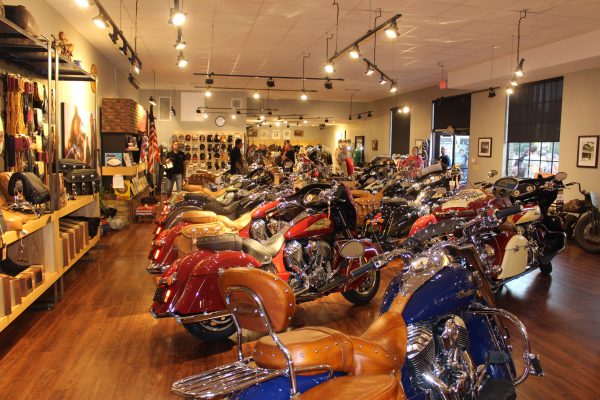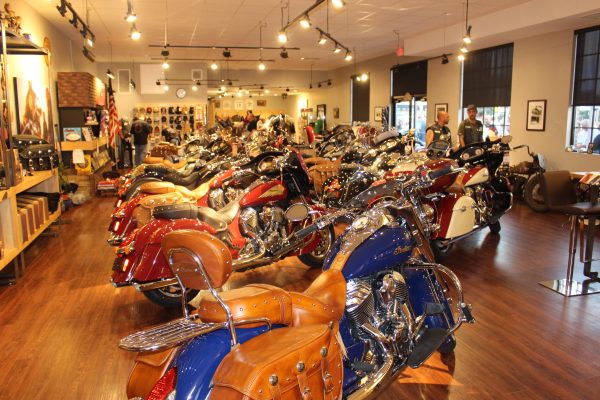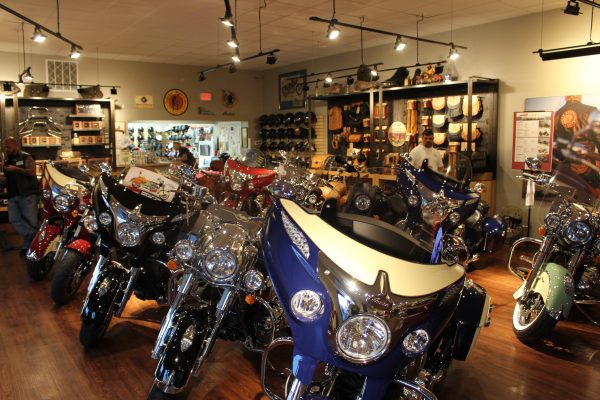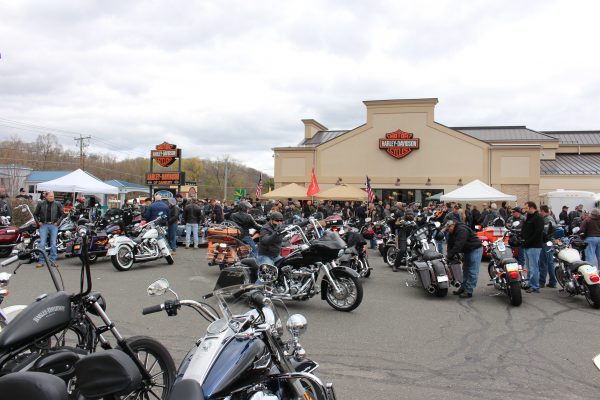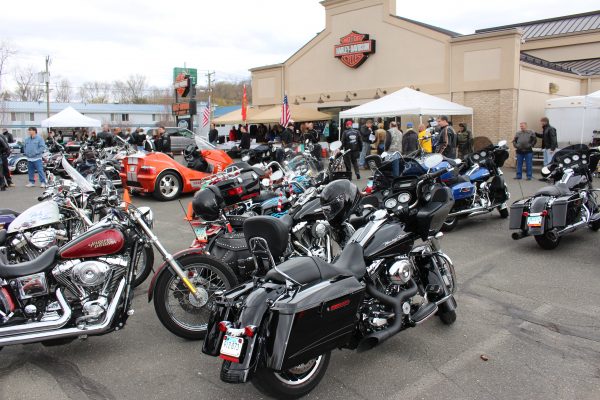As hoped for by Polaris Industries, its Indian brand is now doing what Victory has been unable to accomplish over the past 17 years  – chip away at Harley-Davidson’s seemingly invincible hold on the heavyweight cruiser market in the United States.
– chip away at Harley-Davidson’s seemingly invincible hold on the heavyweight cruiser market in the United States.
Victory was patriotically launched by Polaris on July 4, 1998 as an American-made alternative to Harley-Davidson. Despite building high-quality and stylish motorcycles, the brand has never managed to dent the Harley-Davidson mystique or hurt its sales for the simple reason “it’s not a Harley.”
Enter the current incarnation of Indian, which Polaris acquired in 2011 and re-launched in 2013. The original Indian began producing motorcycles in 1901 in Springfield, Mass. – two years before Harley-Davidson started – and lasted until bankruptcy in 1953. The name, though, remained as iconic as that of Harley-Davidson. Having been revived by a company with deep pockets, it’s now paying off for Polaris.
Confirmation is found in press releases issued (last week) by Polaris and Harley-Davidson announcing third quarter earnings. The former touted record sales, while the latter reported sagging sales, with Harley-Davidson announcing layoffs and a cutback in the number of new bikes shipped to dealers.
Granted the gap between the number of motorcycles produced by Harley-Davidson, which now expects to ship between 265,000 and 270,000 bikes worldwide in 2015, and the still-ramping-up Indian is huge. But Indian is putting its launch issues, notably paint shop problems which has limited production of new models at its Spirit Lake, Iowa factory, in the rear view mirror.
Last week, Polaris announced the acquisition of the former plant and paint equipment used by Lehman trikes in Spearfish, S.D., prior to Lehman’s move to California. Approximately 80 people will be hired and production with two shifts will begin soon, enabling Polaris to boost output of Indian and Victory models.
Dennis Bolduc, owner of Indian Motorcycle of Springfield, the dealer in Westfield, Mass., said Thursday that “at least 60 percent” of his customers are Harley-Davidson owners wanting to convert. Reasons range from “better value for the money” to standard features on Indian models that aren’t found on Harleys. “Right now, demand outweighs supply,” Bolduc said.
Meanwhile, Harley-Davidson is scrambling while having to deal with a high number of recalls. The “Wall Street Journal” recently reported that recalls affected about 210,000 Harley-Davidson motorcycles in 2014 and 312,000 bikes so far in 2015.
Last quarter it sold 52.4 percent of all the motorcycles sold in the U.S. but that was down from 56.3 percent in the same time frame in 2014. Third-quarter sales in the U.S. dropped 2.5 percent from 2014.
The consequence of weakened sales is that Harley-Davidson plans to eliminate roughly 250 salaried positions, most by the end of the year. The company has about 1,060 salaried personnel at its Milwaukee headquarters and 3,775 salaried personnel worldwide, the “Journal Sentinel” newspaper in Milwaukee reported this week.
“We expect a heightened competitive environment to continue for the foreseeable future, and now is the time for us to dial things up with significant additional investments in marketing and product development ,” said Harley-Davidson’s president and chief executive officer, Matt Levatich, in the press release announcing third-quarter earnings.
Harley-Davidson’s plan for 2016 is to dramatically “increase its investment in customer-facing marketing by approximately 65 percent above 2015 levels” as well as increase investment in new product development by 35 percent. The release said, “These changes represent an approximate $70 million increase in investment to drive demand compared to 2015.”
Areas that the company says it will focus on include, “increasing product and brand awareness,” “growing new ridership in the U.S.,” “increasing and enhancing brand access” and “accelerating the cadence and impact of new products.”
No arguing that getting more (and younger) riders and building some new models, will help, but is there any brand anywhere with greater name recognition than Harley-Davidson? OK, maybe Coca-Cola. And what does “increasing brand access” mean? Does this mean adding more dealers? Will that really help if competition with an equally alluring name still has product that is grabbing riders away?
As for Polaris, its motorcycle sales are skyrocketing. Polaris doesn’t break out the brands, but reported that its motorcycle sales were up 154 percent in the third quarter from the same time frame in 2014 “due to continued strong demand for Indian motorcycles and the new Slingshot roadster.”
It’s tempting to say that Harley-Davidson has to be hearing footsteps, except that moccasins don’t make much of a sound.
(Originally published in “The Republican-American” on Oct. 24, 2015.)
 Ride CT & Ride New England Serving New England, NYC and The Hudson Valley!
Ride CT & Ride New England Serving New England, NYC and The Hudson Valley!

